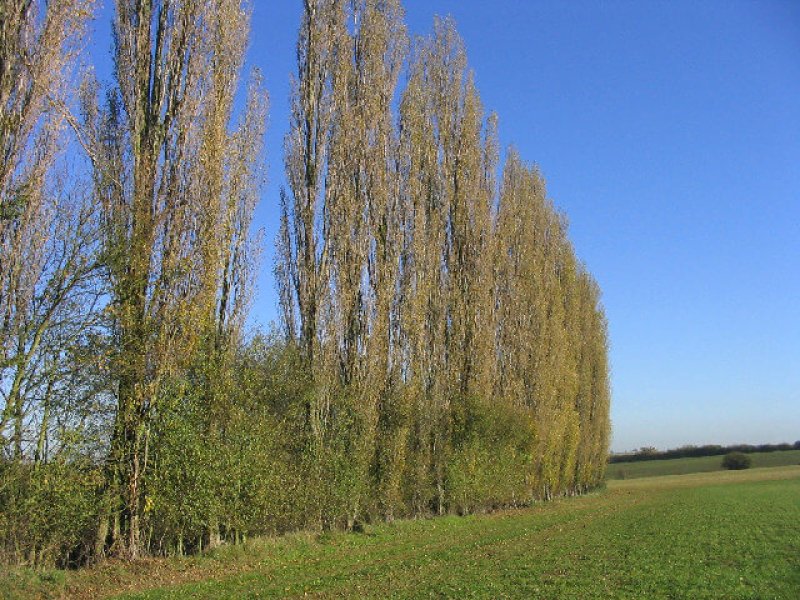When we think of the environmental cost of paper, we usually think of deforestation. We think of a collection of stumps where a rainforest used to be. But the other half of the paper-making process, wherein trees are broken down into usable pulp, necessitates a large input of energy and chemicals. By engineering trees that are easier to break down, researchers hope to make trees which are much easier to process into pulp.
According to Discover’s Carl Engelking:
The archenemy of the papermaker is lignin, which is a complex polymer found in the cell walls of most plants. Currently, lignin must be removed from wood through an expensive chemical- and energy-intensive procedure known as the kraft process. But with genetic engineering scientists can instead chemically modify the lignin to make it easier to break down — and they have demonstrated the ability to do so without adversely affecting the tree’s strength.
Trees can be grown like any other crop — as long as we’re using paper we should farm them to maximize their usefulness and minimize how many uncultivated forests we consume.
Engelking explains the mechanism behind the easier-to-process trees:
Researchers began by inserting genes that code for ferulic acid into young poplar trees. The trees incorporated the acid into their lignin, creating weak points in the chemical structure.
As a result, the lignin from these trees easily breaks apart when treated with a mild base at temperatures of 100 degrees C. Additionally, the trees maintained their growth potential and strength.
They tested their technique in the fast-growing poplar tree, which is already the subject of other interesting biotechnology research.
Lindsay Abrams at Salon responds to Discover’s coverage with skepticism. She points out that we’re on track toward becoming a paperless society anyway, the implication being that improving paper-making is a rather moot endeavor. She also raises environmentalist concerns that GM trees could “contaminate” nearby forests.
The researchers, on the other hand, insist that there are ways to prevent this from happening, although their proposed solutions — “growing crops away from native stands so cross-pollination isn’t possible; introducing genes to make both the male and female trees or plants sterile; and harvesting trees before they reach reproductive maturity” — don’t seem entirely infallible.
To be fair, a completely paper-free society does not seem entirely attainable, at least not any time soon. Minimizing our paper consumption is obviously the best way to minimize the environmental impact of paper production — that’s obvious — but as long as our world will be using paper in some significant capacity then maximizing the efficiency of cultivated trees seems a very useful thing.
Paper isn’t the only thing the researchers are interested in. They say (and Abrams does acknowledges) that their technique could also be useful for biofuels, wherein bypassing lignin and breaking down trees is still one of the most energy-intensive steps.
“We’re a petroleum reliant society,” wood scientist Shawn Mansfield said in a statement. “We rely on the same resource for everything from smartphones to gasoline. We need to diversify and take the pressure off of fossil fuels. Trees and plants have enormous potential to contribute carbon to our society.”
Mansfield, based at the University of British Columbia is one of the authors of the study, a collaborative effort between the University of British Columbia, the University of Wisconsin-Madison, Michigan State University. The results were published in Science last Thursday, April 3.
Kenrick Vezina is Gene-ius Editor for the Genetic Literacy Project and a freelance science writer, educator, and amateur naturalist based in the Greater Boston area.
Sources:
- “Genetically Modified Trees Could Clean Up Paper Industry,” Carl Engelking | Discover
- “Genetically modified trees produce environmentally friendlier paper,” Lindsay Abrams | Salon
- “Researchers design trees that make it easier to produce pulp,” University of British Columbia
- “Monolignol Ferulate Transferase Introduces Chemically Labile Linkages into the Lignin Backbone,” Science
Additional Resources:
- “Scientists Genetically Modified Trees So They Can Make Greener Paper,” Adam Clark Estes | Gizmodo
- “Genetically Modified Trees Yield Paper, Biofuels with Less Polluting and Chemical Cost,” James A. Foley | Nature World News
- “Anti-GMO salvo: Activists target transgenic trees that could protect endangered forests,” JoAnna Wendel | Genetic Literacy Project































